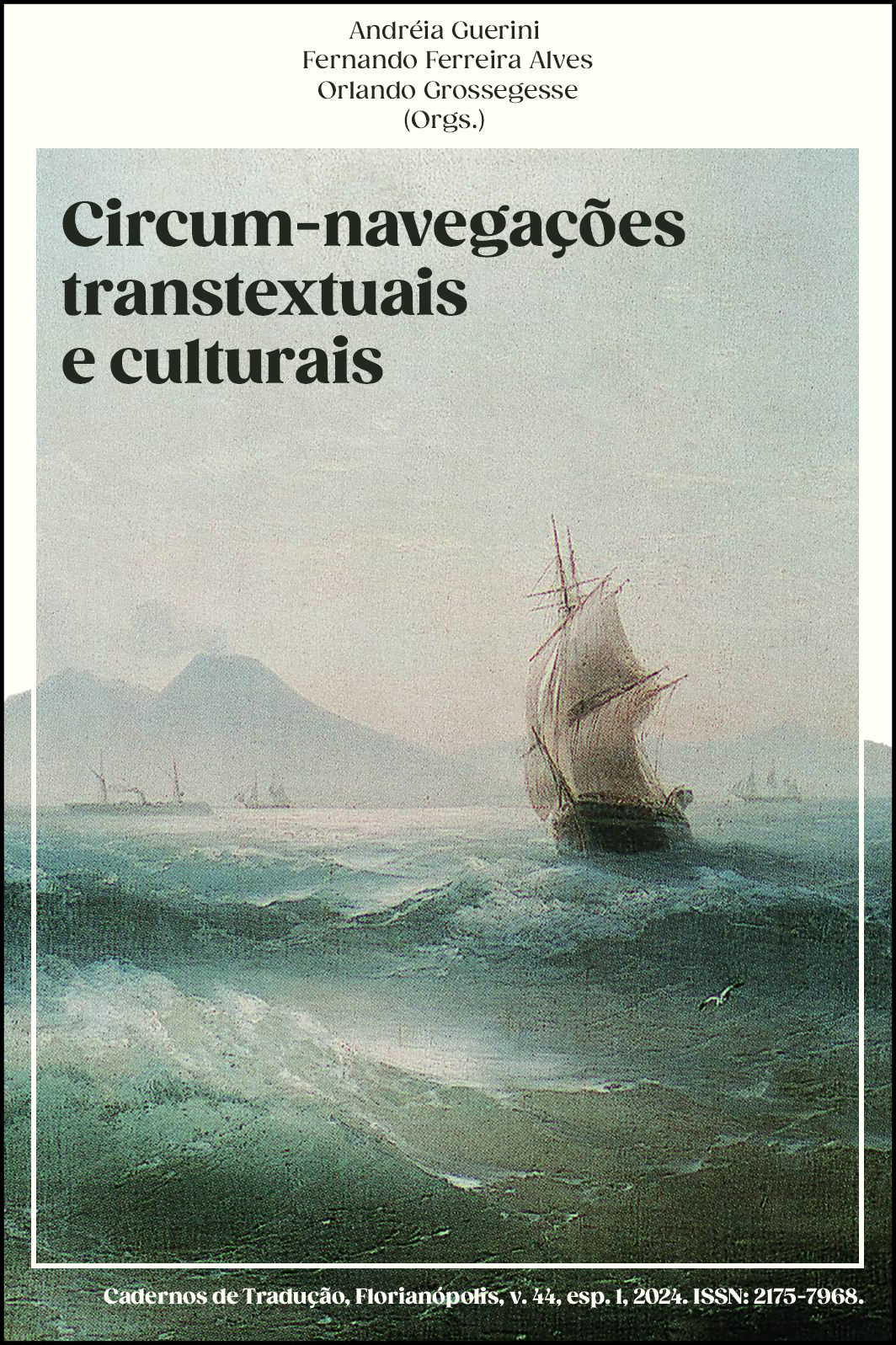Translating Ulyssei@s: Work in progress between general and specialised translation in light of NMT
DOI:
https://doi.org/10.5007/2175-7968.2024.e95214Palavras-chave:
translator training, digital encyclopaedia, multi-generic text, CAT tools, neural machine translation (NMT)Resumo
It is common knowledge that the publication of translation projects carried out by students is a very motivating factor for training. Since the second semester of 2015-2016, undergraduate translation students of the Faculty of Arts and Humanities of the University of Porto have participated in the development of the French and English versions of the digital encyclopaedia Ulyssei@s, created by the Institute for Comparative Literature Margarida Losa (ILCML) in the early 2010s. Besides motivating students, this translation project published on the Internet allows us to develop translation skills, foster teamwork, consolidate the three-phase methodology proposed by Gouadec (2002, 2007), and experiment with several essential tasks in language services: collaborative glossary-making, translation, revision of human translation and post-editing neural machine translation (NMT). Some of the challenges posed by the translation of Ulyssei@s are common to all types of translation, while others are specific to the translation of entries of this sui generis encyclopaedia, such as a variety of textual genres (biography, literary criticism, prose, poetry, theatre, essay) in hybrid texts and the need to find the original or the official translation of the works cited. This paper focuses on the data collected in the spring semester of 2022 and is based on the results of a survey submitted to students at the end of the project. It aims to share the experience of developing an inevitably unfinished project and adapting training and learning to the latest advances in Human Language Technology, since NMT has become a valuable tool for human translators, and Ulyssei@s is a digital encyclopaedia regularly enriched by ILCML collaborators with new entries.
Referências
Bessa-Luís, A. (2009). Embaixada a Caligula. Guimarães Editores.
Bowker, L., & Ciro, B. (2019). Machine Translation and Global Research: Towards Improved Machine Translation Literacy in the Scholarly Community. https://doi.org/10.1108/9781787567214
Council of Europe. (2020). Common European Framework of Reference for Languages: learning, teaching, assessment – Companion volume. Council of Europe Publishing. www.coe.int/lang-cefr
Ehrensberger-Dow, M., Delorme Benites, A., & Lehr, C. (2023). A new role for translators and trainers: MT literacy consultants. The Interpreter and Translator Trainer, 17(3), 393–411. https://doi.org/10.1080/1750399X.2023.2237328
Gouadec, D. (2002). Profession : traducteur. Paris: La Maison du Dictionnaire.
Gouadec, D. (2007). Translation as a profession. John Benjamins.
Instituto de Literatura Comparada Margarida Losa (n.d.). Ulyssei@s. Enciclopédia digital. Available at: https://ulysseias.ilcml.com/en/ Accessed in: Jun. 28, 2023.
Kelly, D. (2014). A Handbook for Translator Trainers. Routledge. https://doi.org/10.4324/9781315760292
Kiraly, D. (2012). Growing a Project-Based Translation Pedagogy: a fractal perspective. Meta, 57(1), 82–95. https://doi.org/10.7202/1012742ar
Kiraly, D., & Massey, G. (2019). Towards Authentic Experiential Learning in Translator Education (2nd ed.). Cambridge Scholars Publishing.
Koehn, P. (2020). Neural Machine Translation. Cambridge University Press.
Lefer, M. A., Piette, J., & Bodart, R. (2022). Machine Translation Post-Editing Annotation System (MTPEAS) manual. UCLouvain.
Melby, A. K., & Warner, T. (1995). The Possibility of Language: A discussion of the nature of language, with implications for human and machine translation. Benjamins Translation Library.
O’Brien, S., & Ehrensberger-Dow, M. (2020). MT Literacy – A cognitive view. Translation, Cognition & Behavior, 3(2), 145–164. https://doi.org/10.1075/tcb.00038.obr
Pujalrás, S. S. (2021). Agustina Bessa-Luís. In Instituto de Literatura Comparad Margarida Losa. Ulyssei@s. Enciclopédia digital. https://ulysseias.ilcml.com/pt/termo/bessa-luis-agustina/
Schmale, G. (2013). Qu’est-ce qui est préfabriqué dans la langue ?: Réflexions au sujet d’une définition élargie de la préformation langagière. Langages, 189, 27–45. https://doi.org/10.3917/lang.189.0027
Wilks, Y. (2009). Machine Translation: Its Scope and Limits. Springer.
Downloads
Publicado
Como Citar
Edição
Seção
Licença
Copyright (c) 2024 Cadernos de Tradução

Este trabalho está licenciado sob uma licença Creative Commons Attribution 4.0 International License.
Autores têm autorização para assumir contratos adicionais separadamente, para distribuição não exclusiva da versão do trabalho publicada nesta revista (ex.: publicar em repositório institucional ou como capítulo de livro, com reconhecimento de autoria e publicação inicial nesta revista).





















































